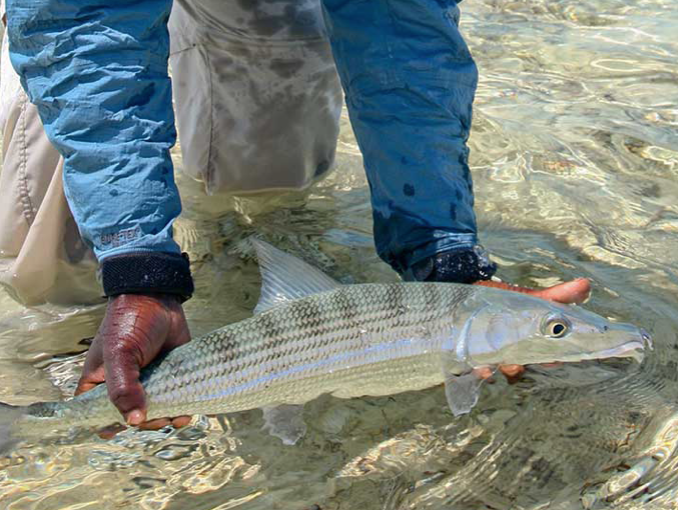This series of blog posts will summarize five exciting discoveries about bonefish biology made by Bonefish & Tarpon Trust and our collaborators over the past 20 years. And be sure to tune in to BTT’s Facebook feed this Friday, April 10, at 12 pm EST. Dr. Ross Boucek, BTT Florida Keys Initiative Manager, and Justin Lewis, BTT Bahamas Initiative Manager, will be discussing BTT’s bonefish discoveries LIVE and answering your questions!
BTT’s approach to conserve bonefish involves learning where all of the habitats bonefish use throughout their lives are, including where they spawn, where the juveniles are, and how much flats habitat the fish need, so we can protect those areas, and make sure the fish are safe. Click HERE to read Part 2 in the series.
#3 If you keep bonefish submerged, they will live to fight another day
The catch-and-release bonefish fishery is sustainable and extremely valuable. However, if the fish don’t survive to be caught again, the fishery is not sustainable. BTT collaborating scientists conducted several studies to determine the best way to handle and release bonefish. Their results showed that if you follow the best handling practices, the bonefish will most likely survive being caught and released.
Here are three of the most important points to keep in mind:
1) Avoid holding bonefish by the gills or vertically.
2) Avoid touching bonefish with sunscreen or sungloves on your hands.
3) More important to bonefish than other species, keep them submerged! Bonefish need a lot of oxygen; they don’t live in brackish waters like snook and tarpon, which can cope with a little oxygen debt. Holding a bonefish out of the water for even 30 seconds greatly increases their likelihood of dying upon release. The half-submerged bonefish makes for a better photo than the standard grip and grin!
Check out this video about bonefish best handling practices to learn more. And click here for more catch-and-release tips.




